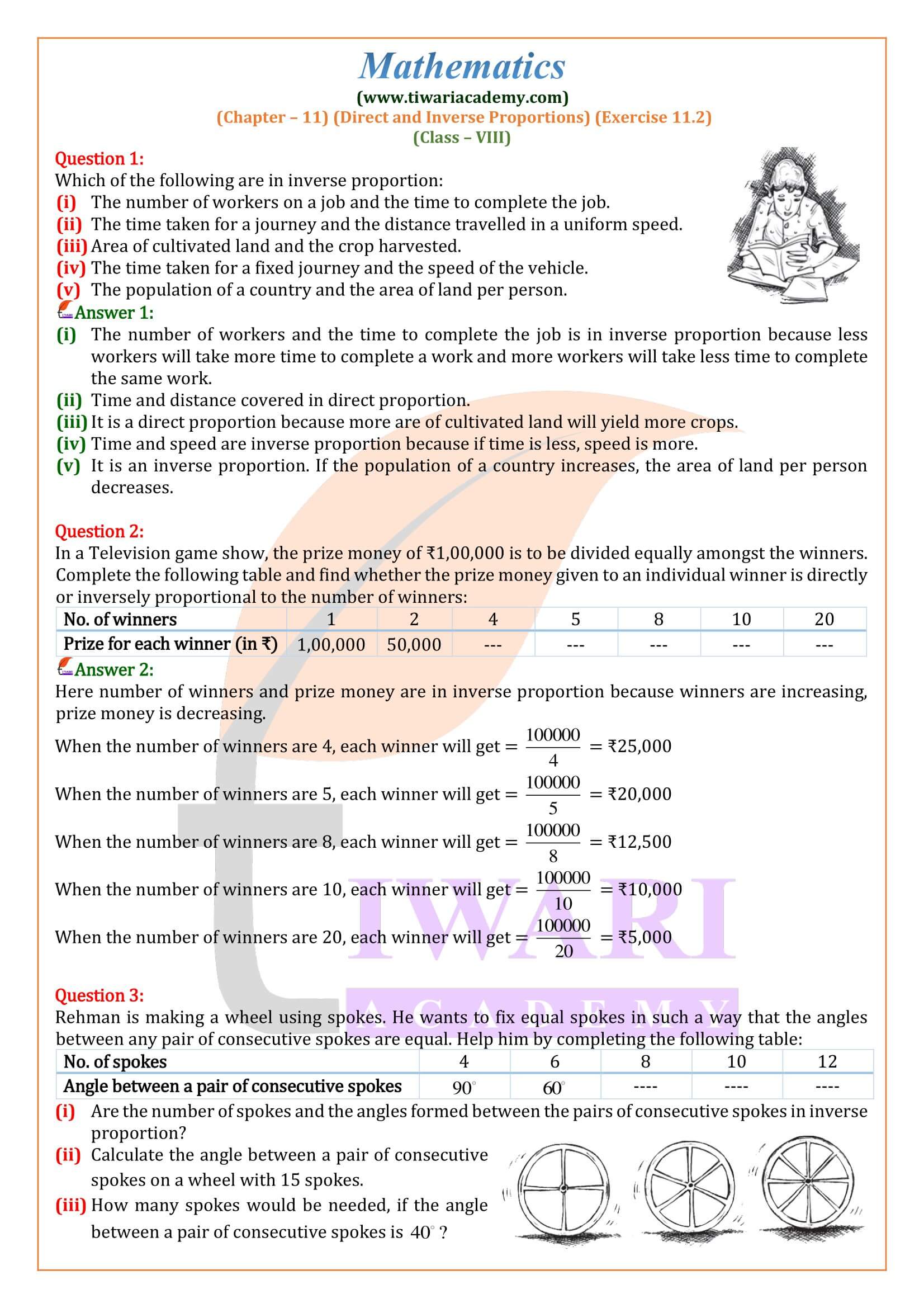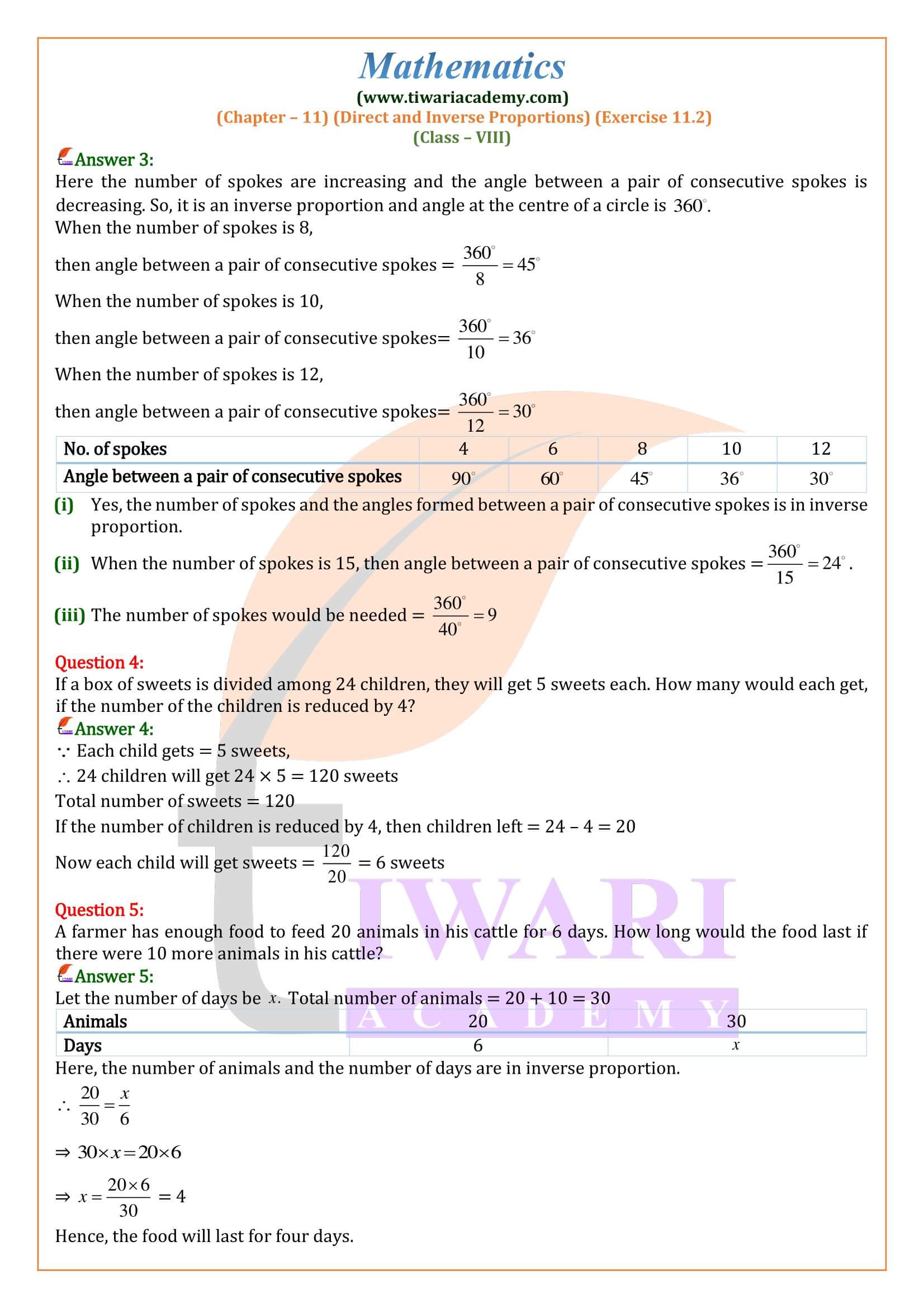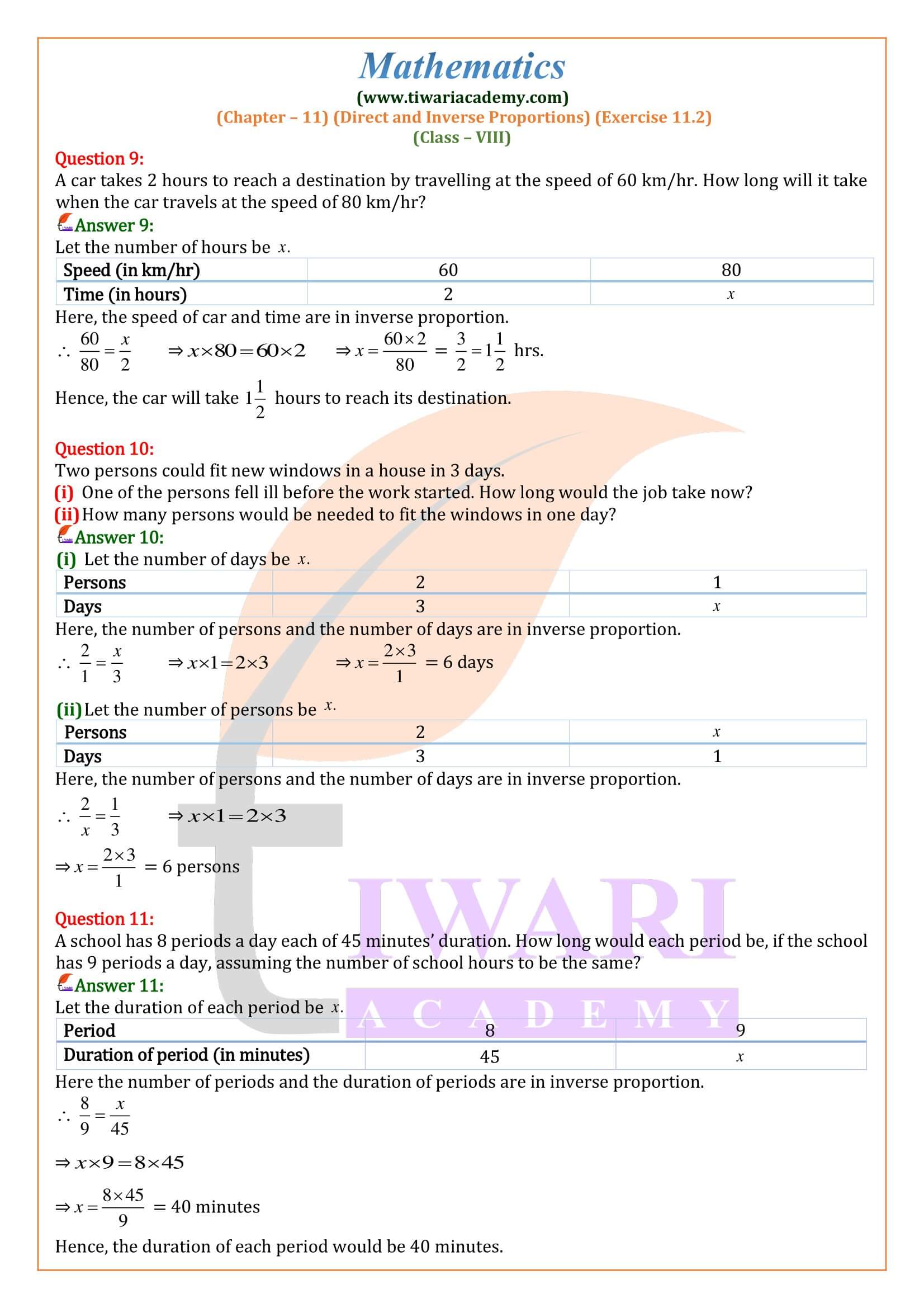NCERT Solutions for Class 8 Maths Chapter 11 Exercise 11.2 Direct and Inverse Proportions in Hindi and English Medium updated for CBSE 2025-26 exam. The questions explanation of ex. 11.2 class 8th mathematics are revised on the basis of rationalised syllabus and new NCERT books for academic session 2025-26.
8th Maths Exercise 11.2 Solution in Hindi and English Medium
| Class: 8 | Mathematics |
| Chapter: 11 | Exercise: 11.2 |
| Topic: | Direct and Inverse Proportions |
| Content Mode: | Text, Videos and PDF |
| Academic Session: | CBSE 2025-26 |
| Medium: | English and Hindi Medium |
Class 8 Maths Chapter 11 Exercise 11.2 Solution
Class VIII Maths NCERT Book Ex. 11.2 of Direct and Inverse Proportions in PDF file format free to download without any login or registration. All the contents are updated for session 2025-26 for CBSE and state board students. In class 8 mathematics exercise 13.2 questions are based on inverse proportion and its application in daily life. All the questions are solved with easy method so that students can understand easily.
Inverse Proportion (Inverse Variation)
We know that with more speed, a car will take less time to cover a fixed distance. Similarly, more workers will finish a work in less time.
Thus, there are cases wherein two variables are related to each other in such a way that on increasing the one, the other decreases proportionally and vice versa.
If 45 men can do a piece of work in 49 days. In how many days’ will 35 men do it?
Let the required number of days be x. Then, we have:
Clearly, less men will take more days to finish the work.
So, it is a case of inverse proportion.
So, 45 x 49 = 35 X x
Or, x = (45 x 49)/35 = 63
Hence, required number of days = 63
Inverse proportion
Two quantities x and y are said to be in inverse proportion if xy = k, where k is a constant.
Thus, x1 y1 = x2 y2 = x3 y3 = ……….. = k.
A can do a piece of work in 30 days while B can do the same work in 24 days. In how many days can they complete it, if they work together.
A’s 1 day’s work = 1/30
B’s 1 day’s work = 1/24
(A + B)’s 1 day’s work = 1/30 + 1/24 = 3/40
3/40 work A and B can do in 1 day
A and B can do the work in 40/3 days = 13(1/3) days
Hence, A and B together can do work in 13(1/3) days.
What is a real life example of inverse variation?
(i) For example, when you travel to a particular location, as your speed increases, the time it takes to arrive at that location decreases. When you decrease your speed, the time it takes to arrive at that location increases. So, the quantities are inversely proportional.
(ii) If family has less members, more saving (provided that the family has the same amount of income). More members, less saving (income is still the same). It is an inverse variation. More members is in joint variation to earning and saving.
How do you solve inverse variation problems?
- Identify the input, x, and the output, y.
- Determine the constant of variation. …
- Use the constant of variation to write an equation for the relationship.
- Substitute known values into the equation to find the unknown.
What have you learned about inverse variation?
The main idea in inverse variation is that as one variable increases the other variable decreases. That means that if x is increasing y is decreasing, and if x is decreasing y is increasing. The number k is a constant so it’s always the same number throughout the inverse variation problem.
Why do we learn in exercise 11.2 of class 8 Maths?
In chapter 11 of the class 8 Mathematics NCERT textbook, students will learn about direct and inverse proportion. Exercises 11.2 of chapter 13 from NCERT help you understand the concepts of proportion in simplified manner. You will also learn “How to identify and represent direct and inverse proportion” situations using mathematical equations. Students will also learn how to apply the concept of direct and inverse proportion to real-life situations. This will enhance their reasoning skills.
Are the examples of exercise 11.2 of 8th Maths important for exam?
Examples of exercise 11.2 of chapter 11 from class 8 Maths NCERT are important to learn the concepts of exercise questions. These are helpful for students to understand the concept of Direct and inverse variation and the way of calculation will be done. The example are used to illustrate the steps needed to solve and simplify the questions given in exercise.
Which question of exercise 11.2 of class 8 Maths asked frequently in exam?
There are 11 questions in exercise 11.2 of class VIII mathematics. All of them are good for practice and revision during the exams. Student should solve them so that they can understand the concept of ex 11.2 class 8 Maths. From the examination point of view, question number 4 to 11 are much suggested to practice actively as these are considered more important.







